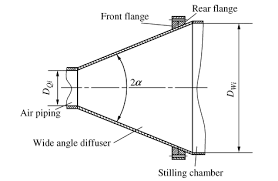Existing on-campus wind tunnel
Project Description
Project 11 – Low-Speed Wind Tunnel Design Client – David Willy
Northern Arizona University has a small wind tunnel that is used for experiments associated with classroom instruction of various courses (Fluids II, Compressible Flow, Thermal Fluids) within the Mechanical Engineering program, but it is not large enough for wind turbine testing of even micro-turbines. This is generally because the specimen area (where test apparatuses are placed) within a wind tunnel test section is much smaller than the physical space between the walls of a wind tunnel (think no slip condition on the walls) and can only test small objects. Since the engineering departments perform wind energy research and compete in the undergraduate Collegiate Wind Competition (CWC) and other off-campus wind tunnel resources are becoming inaccessible, the Mechanical Engineering Department is in need of a Low-Speed Wind Tunnel for micro-scale wind turbines as well as other potential future wind tunnel applications.
Scope of the Work: To design (and potentially build) a Low-Speed Wind Tunnel capable of testing micro-scale wind turbines. This will be an analytical project (“a paper project”) but could turn into a build project, pending funding and space.
Expected Milestones During the Project:
1. Acquire copies of Barlow’s Low-Speed Wind Tunnel Testing book and/or other resources
2. Research wind tunnel types and determine pros and cons
3. Research ducted fans and control methods used for wind turbines
4. Completely design a full wind tunnel per the requirements
5. Research funding sources for paying for such a build
6. Talk with NAU facilities and space allocation employees to determine space availability
CWC Wind Tunnel Requirements:
Must have a minimum specimen area within the test section of 45cm X 45cm X 45cm
Must be able to support micro-turbines with the tower footprint of the CWC turbines
Must provide wind velocities between 0-20 m/s. (programmable velocity profiles optional)
Must be safe to operate per OSHA and other applicable safety standards
Must have data collection to measure wind velocity and turbine power
Can be loosely based on existing Department of Energy CWC wind tunnel designs
https://www.energy.gov/eere/collegiatewindcompetition/collegiate-wind-competition
Research Wind Tunnel Requirements:
Provide wind velocity up to 50 m/s
Provide specimen area large enough for 2.5:1 scale models of SAE Areo, Cars, ect.
